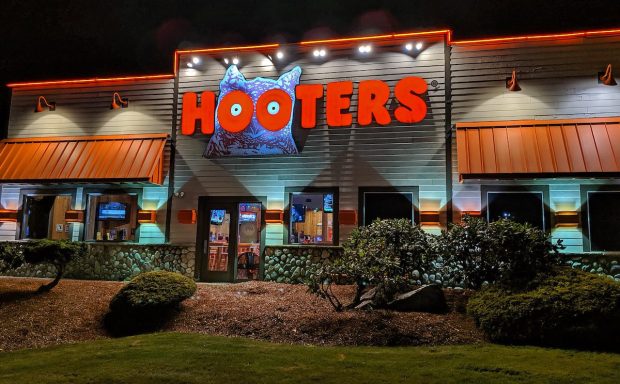Hooters CEO: Rise of Fast-Casual Has Transformed the Restaurant Industry

In Hooters’ four-decade history, the rise of off-premise has marked the industry’s most dramatic shift.
The casual dining brand, which has more than 370 locations across the United States and abroad, is celebrating its 40-year anniversary. In an interview with PYMNTS, Sal Melilli, CEO of Hooters of America, said the biggest change in the industry in that time has been the rise, in recent years, of fast-casual dining.
“I would say that the biggest change has been the consumer shift, with the advent of fast-casual dining,” Melilli said. “The consumer’s more on the go. The consumer’s more on demand. So, hence the ability to get food delivered.”
Indeed, digital ordering has become the norm, with most consumers engaging with restaurants’ eCommerce channels at least some of the time. Research from PYMNTS’ study “12 Months of the ConnectedEconomy™: 33,000 Consumers on Digital’s Role in Their Everyday Lives,” which drew from tens of thousands of U.S. consumers in 2022, noted that 57% engage digitally with restaurants.
Much of this transformation occurred in the year following the initial outbreak of the pandemic. PYMNTS’ 2021 study, the “How We Eat Playbook,” created in collaboration with Carat from Fiserv, which drew from a survey of more than 5,200 U.S. consumers, found that diners had become 31% more likely to buy meals to be eaten at home than they were to dine on-site.
“COVID really was an opportunity for us to change the things that we wanted to change and provided a platform for us to be able to accelerate the growth that we wanted to do in terms of technology,” Melilli noted.
Hooters of America has been supplementing its casual dining business with more off-premise focused concepts. In 2020, the company launched fast-casual chain Hoots Wings, and in the past couple of years, it has also launched several virtual brands — burger chain Hootie’s Burger Bar, seafood chain Hootie’s Bait & Tackle and chicken tender brand Chase Elliott’s Chicken Tenders.
Hooters is not the only casual dining brand looking to increase its share of consumers’ off-premise spending by expanding into fast-casual. For instance, IHOP and Friendly’s have also added fast-casual concepts in recent years.
In addition to the rise in digital ordering, Melilli also noted that the increase in at-home dining occasions in recent years has created the opportunity to drive retail sales with branded packaged goods.
“With more at-home occasions or more party occasions, a natural extension of that is us getting into the liquor business with liquor products in liquor stores and grocery stores and getting into the frozen food product section in grocery stores,” he said.
Sure enough, many restaurant brands have been seizing on that same opportunity. Quick-service restaurant (QSR) chain White Castle, for instance, announced Thursday (March 30) the launch of its second beer in partnership with Evil Genius Beer Company. Fast-casual chain Fatburger shared Tuesday (March 28) that it is launching a THC-infused ketchup. Last month, Red Lobster debuted its first line of frozen seafood products.
Reflecting on the overall value of Hooters’ four-decade history, Melilli said it goes a long way toward building trust with customers.
“Longevity gives us credibility,” he said. “There’s a consumer expectation. There’s brand awareness, brand recognition. It gives credibility both with our existing consumers, as well as new people that want to try the brand that perhaps haven’t.”

